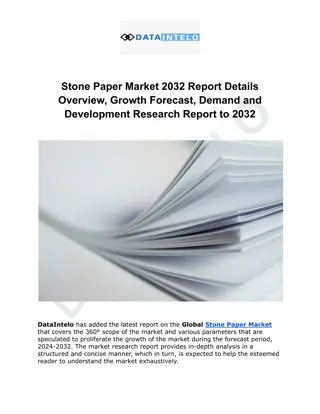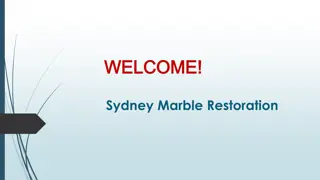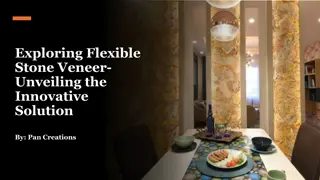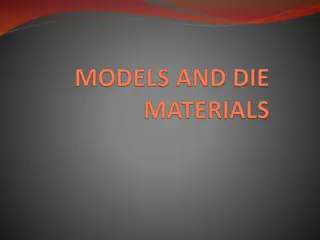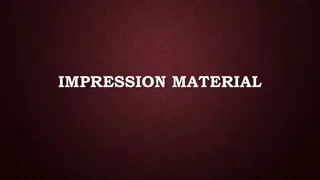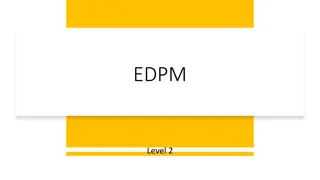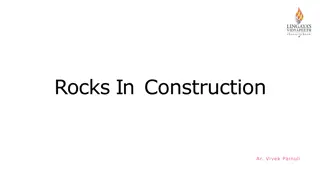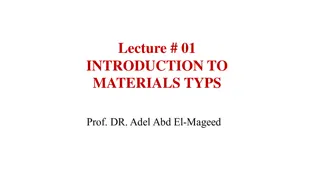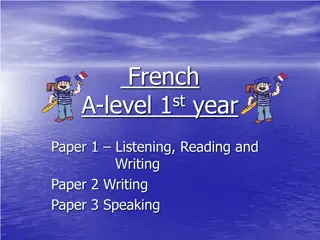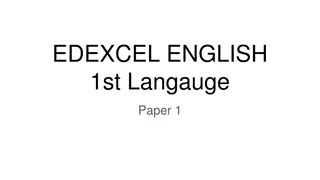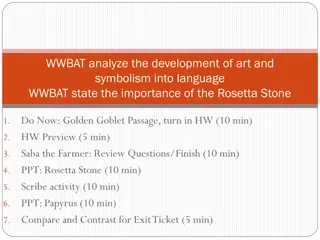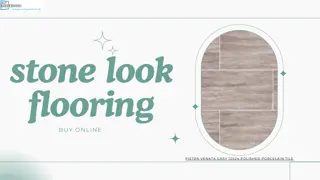Journey of Writing Materials: From Stone to Paper
Explore the evolution of writing materials from stone to paper, witnessing the advancement that has shaped our lives. Join us in today's lesson discussing how paper has revolutionized our world and discover the learning outcomes awaiting your journey.
Uploaded on Sep 13, 2024 | 0 Views
Download Presentation

Please find below an Image/Link to download the presentation.
The content on the website is provided AS IS for your information and personal use only. It may not be sold, licensed, or shared on other websites without obtaining consent from the author.If you encounter any issues during the download, it is possible that the publisher has removed the file from their server.
You are allowed to download the files provided on this website for personal or commercial use, subject to the condition that they are used lawfully. All files are the property of their respective owners.
The content on the website is provided AS IS for your information and personal use only. It may not be sold, licensed, or shared on other websites without obtaining consent from the author.
E N D
Presentation Transcript
M Ma ay yA Al ll la ah hb bl le es ss sy yo ou ua al ll lm my yd de ea ar rs st tu ud de en nt ts s. .
Introduction Introduction of Class & Subject Introduction of Class & Subject Teacher s Introduction Teacher s Introduction Md Senior Lecturer & & Head of the Department (English) Cambrian School & College Campus Dhaka Md Hasan Senior Lecturer Hasan Hafizur Hafizur Rahman Rahman Class Subject Paper Class- -VIII Subject- -English 1st Paper VIII Head of the Department (English) Cambrian School & College Campus- -5 5 Dhaka English 1st
Let us watch and observe some images. Let us watch and observe some images.
Writing on stone Writing on stone
Writing on bark. Writing on bark.
Writing on slate. Writing on slate.
Now we write on papers. Now we write on papers.
Written records. Written records.
What have you observed by the images? A gradual development of writing materials and at last it has been fixed into papers. Has it advanced our life? If yes, let us see our today s lesson.
Our Todays Lesson is- Paper has advanced our life. Unit-9, Lesson-6
Learning outcomes At the end of the lesson, we will be able to- ask and answer questions read aloud texts with proper sounds, stress and intonation write answers to the questions write short paragraphs
A Look at the picture and say what this is. Discuss with you partner.
Key words of the lesson
Record Meaning : Evidence/documentation Give me the record of your information.
surface Over Outward/ upper portion Meaning Under Surface water of the river is not clean.
Stone Rock/pebbles
Bark Skin of the tree Surface of the tree In Bengali it is called bakol. There is no tree without bark.
Encyclopedia Written records of the world.
Wood Plunk People wrote on wood plunk in ancient time.
Digital To the point/ Real/Actual/perfect 29 29
But what does it need? Written records.
How did people transfer ideas in ancient time? speaking listening Then?
Writing. Was it very easy? No, because writing material was not available. What did people write then on? People wrote then on- metal wood bark stone
and leaves.
Knowledge was very restricted before paper age. It is very easy to carry a book of 100 page. But is it at all easy to carry a book of 100 pieces of stones?
For this problem, people looked for easy writing materials for ages. Finally, paper was invented in China in 105 AD Anno Domini. We can keep all our records in the papers now. In fact, paper has changed our life.
But in modern age, where are we staying? To think, we become very excited because of- We can carry the entire world of knowledge in a form in our laptops, mobiles and memory cards. digital
B Read the text silently and answer the following questions. 1. How did people transfer ideas before writing was invented? 2. Why did people look for easy writing materials? 3. Why was knowledge very restricted in pre-paper age? 4. How has paper changed our life? 5. Where and when was paper invented?
C Discuss with your partner and make a list of things other than paper on which we can write with pens, pencils, markers, brushes, paint/pastels etc.
D Listen to the teacher/CD carefully and complete the following sentences. 1 The person who invented paper is a ________ man. 2 He took the bark of a mulberry tree and _________ fibers. 3 This knowledge of _____________ was first used in China. 4 The word paper is not ______________. 5 The word paper was derived from a kind of Egyptian plant called ________ Papyrus Chinese bamboo papermaking a Bengali word
E Look at the following boxes first. Listen to the teacher/CD again. Then write in the boxes the series of works Ts ai Lun did in making paper. First one and the last one are done for you. 1. He took the bark of Mulberry tree and bamboo fiber. 2. He mixed them_________ together. the mixer like powder. 3. He pounded _____________________ into water. 4. He poured the mixer _________ mix with the thing. 5. He let the water _________________ 6. He let the thing dry.
F PROJECT WORK: On weekend, observe how ruti or paratah is made in the kitchen. Carefully take notes of each step taken to make it. Then back in class, share your notes with your partner/group. Finally write how ruti or paratah is made and make a presentation in the class.




